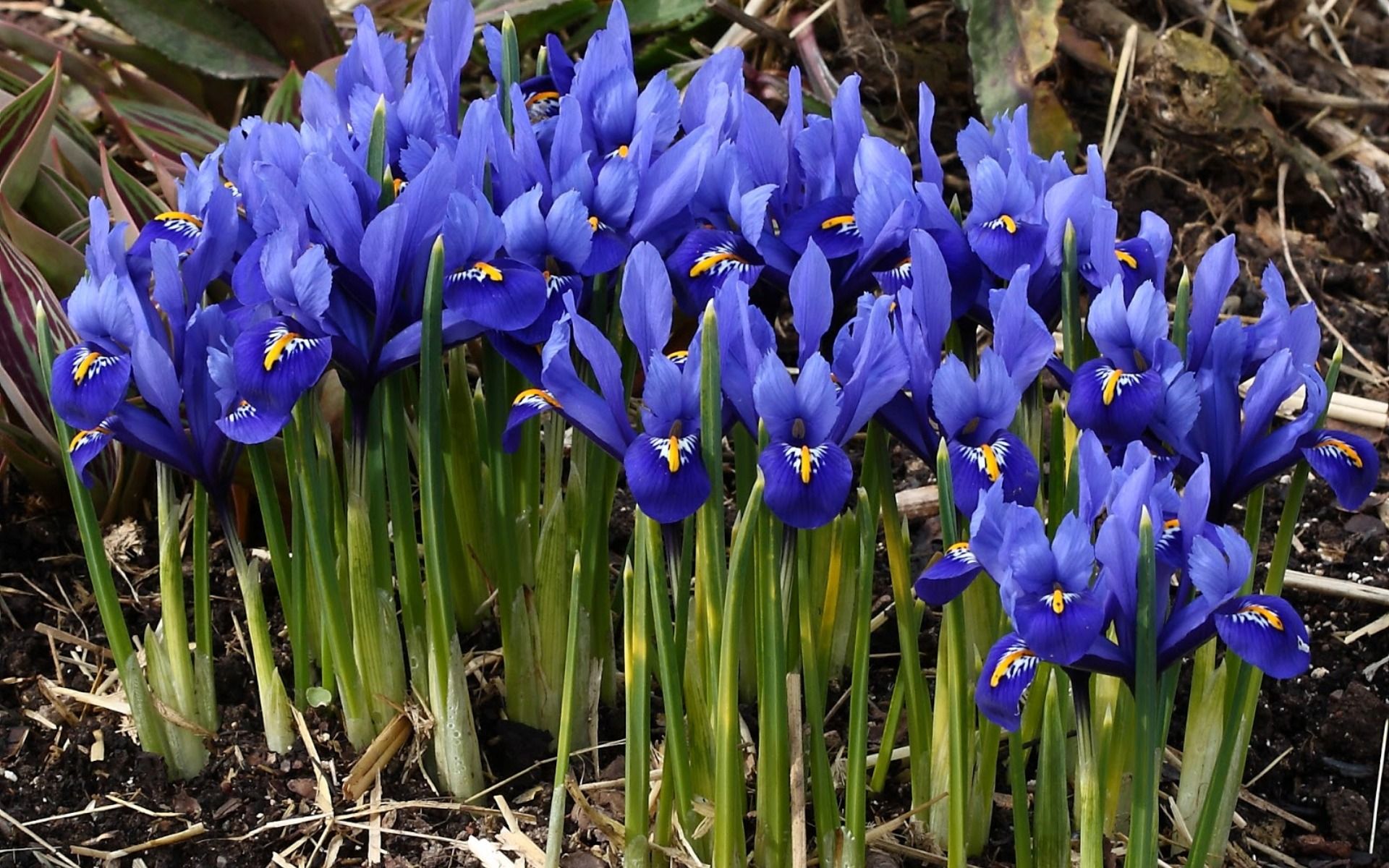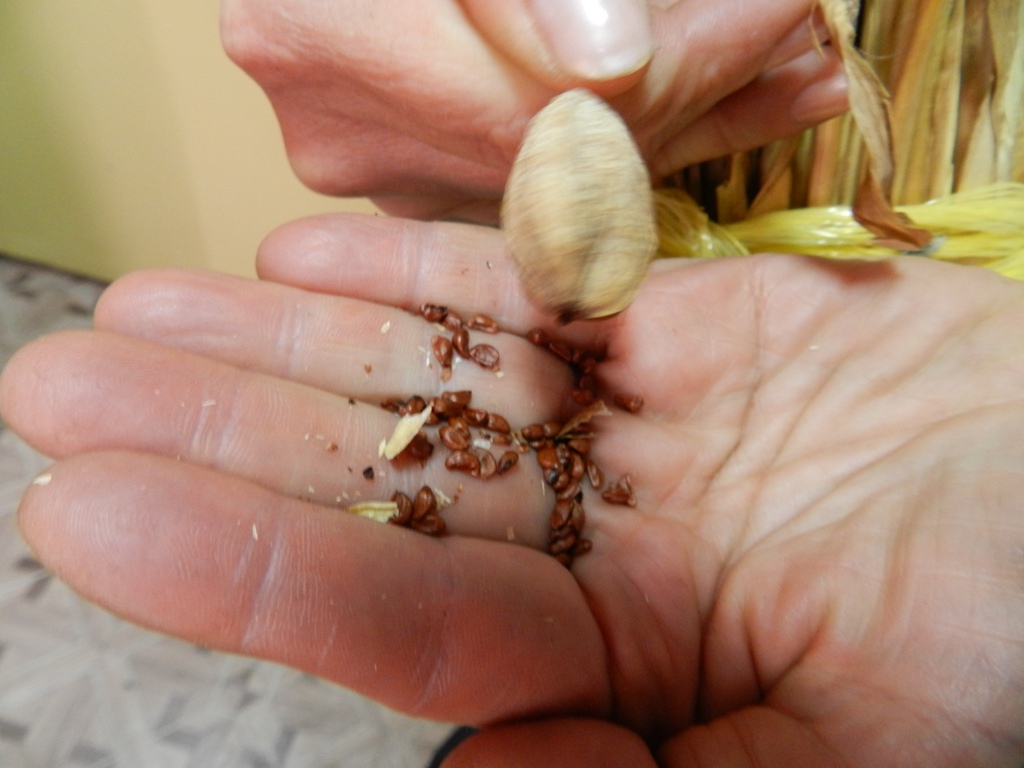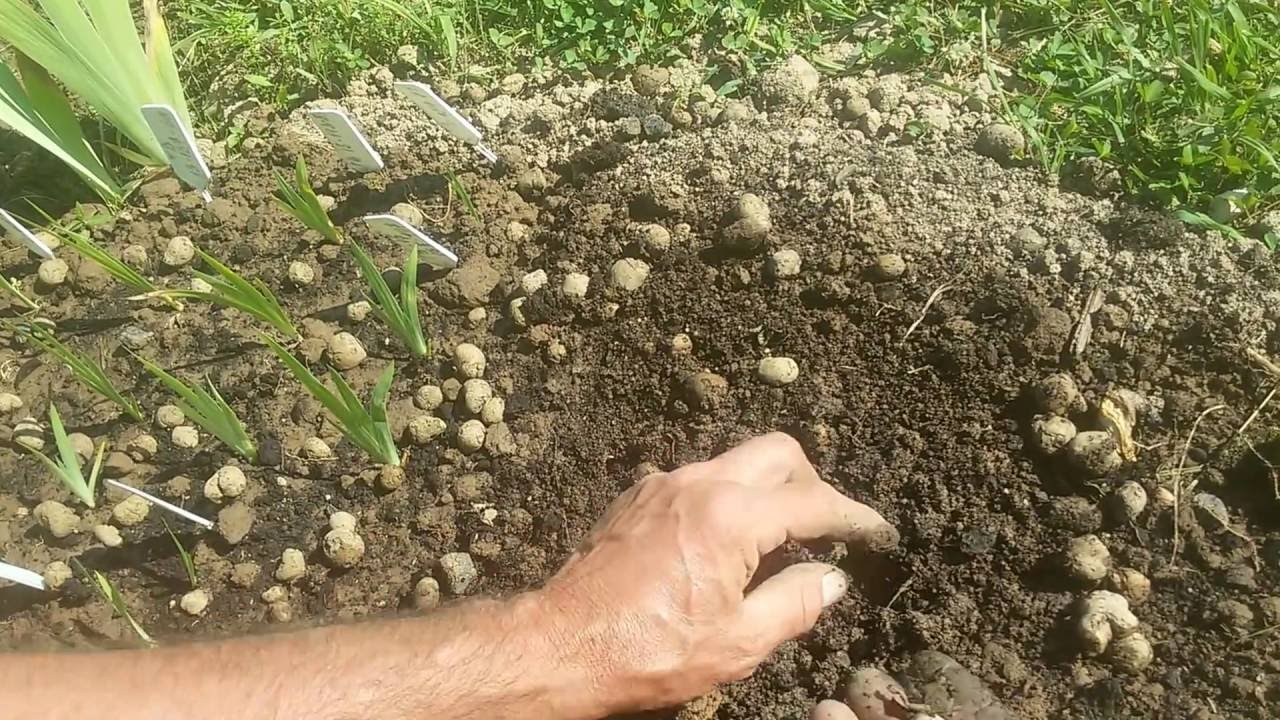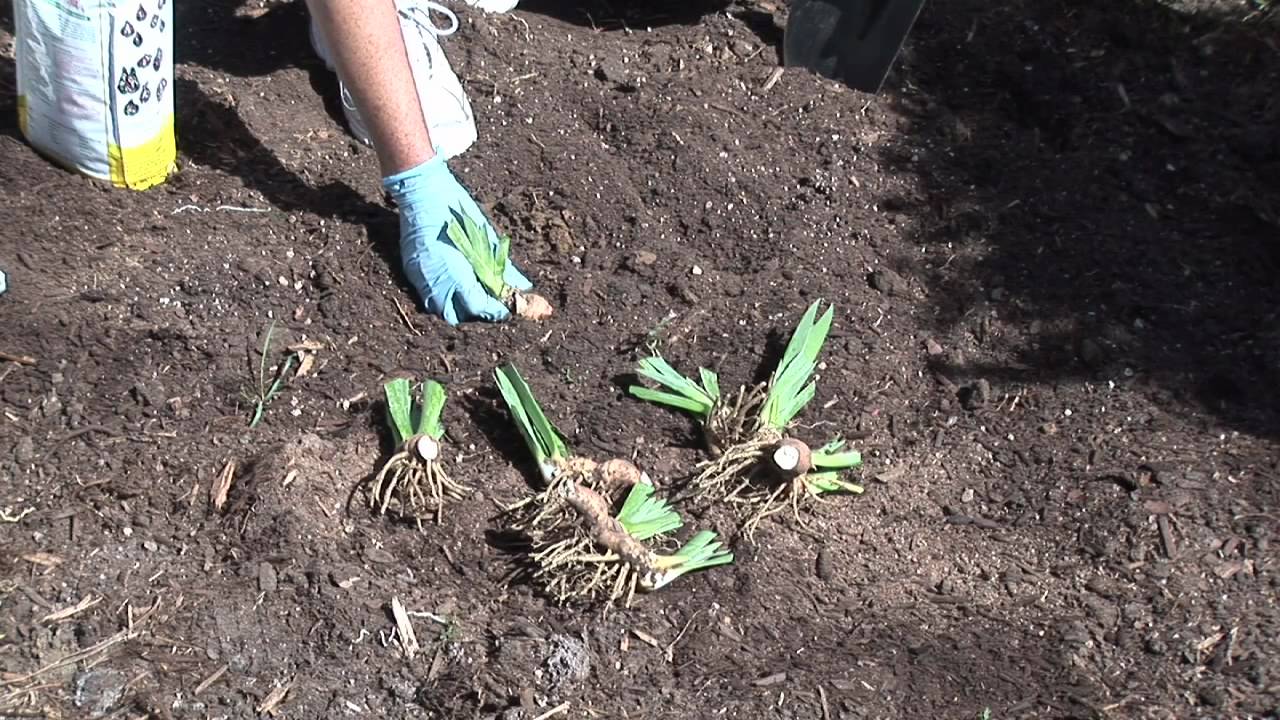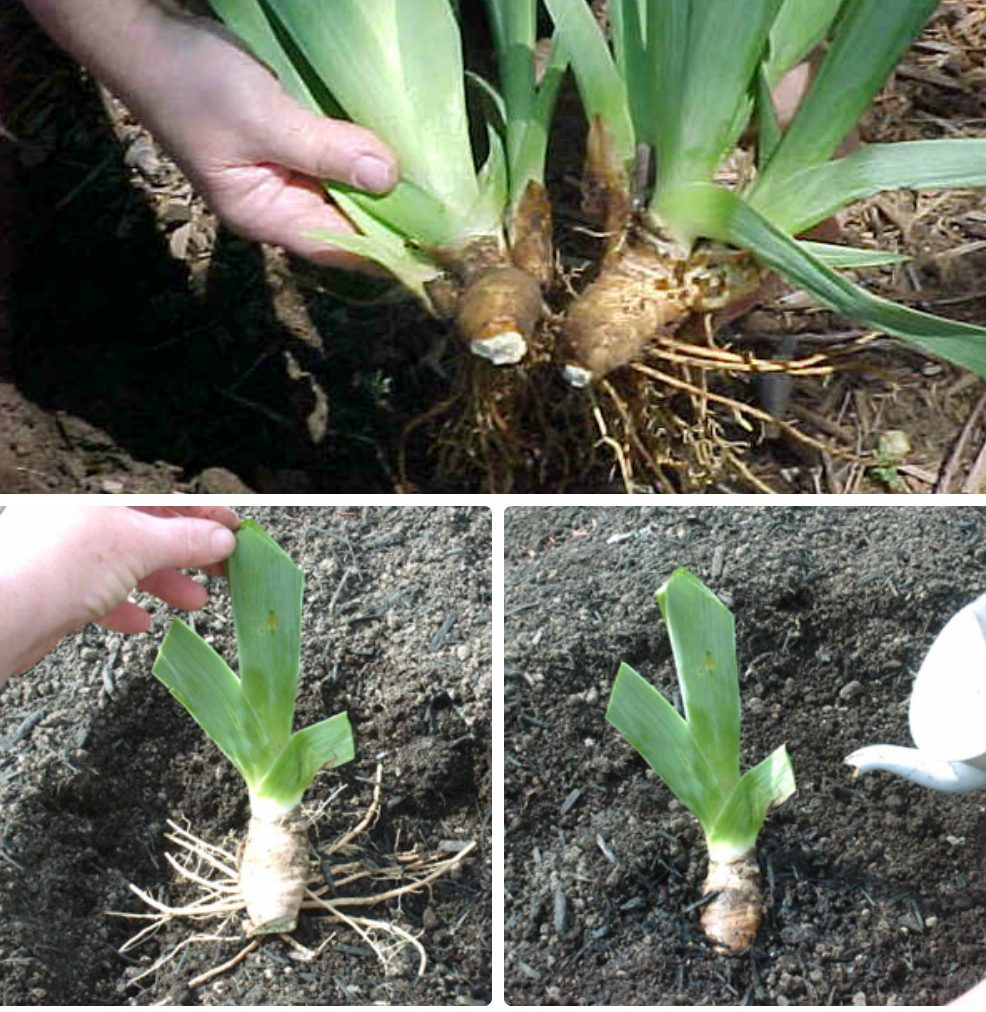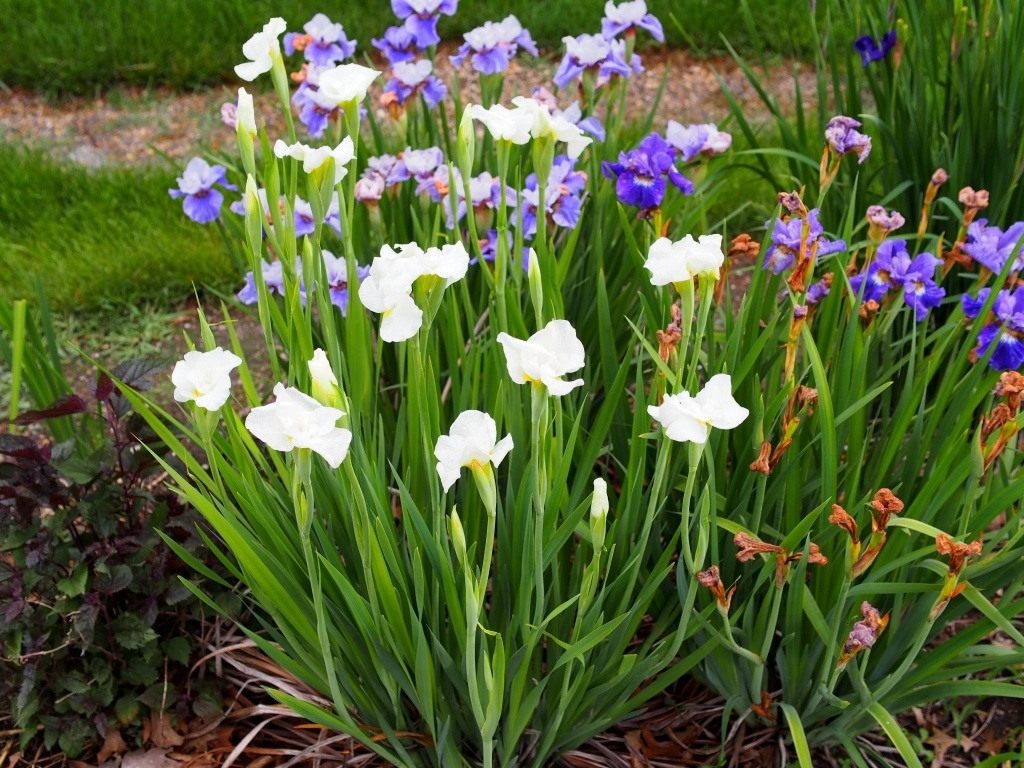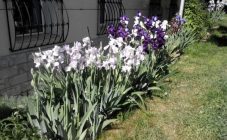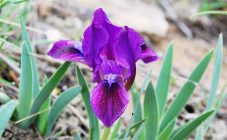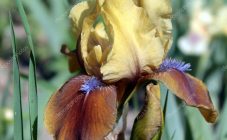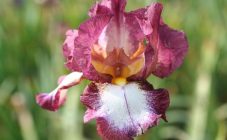Content:
Irises are the same cockerels (or irises) that are familiar to everyone from childhood. Iris can be of a variety of shades: yellow, white, lilac, blue, or any other color. In appearance, they are similar to orchids, only with thinner petals. Many people like rainbow flowers, they are able to decorate any area. Novice gardeners are often interested in how irises reproduce.
Reproduction of irises
Irises are a generic name for several varieties of garden plants with different root systems: bulbous or rhizome.
Some sources indicate that the plant is rooted. But the root of the iris is not able to regenerate. Most likely, we are talking about the rhizome, there is no need to confuse 2 different organs.
Rhizomatous roosters are divided into 2 groups: non-bearded and bearded.
The group of non-bearded irises includes: Siberian, Japanese, chrysographs and others. The bearded representatives of the Irisovs include: tall, dwarf, medium-sized bearded and others. They are quite unpretentious and tolerate the winter period perfectly.
Bulbous irises are also divided into groups: xyphyum, juno and iridodictium.
Reproduction of irises can be done in two ways: by dividing rhizomes (vegetative) and by seeds (generative).
Most often, the vegetative method of reproduction is used, since in this case the killer whales will bloom from the first year. When irises are propagated by seeds, the bushes will bloom no earlier than 2-3 years later.
Males are propagated by seed, usually to create new varieties or to introduce wild varieties into crops. Depending on the climatic features of the area, determine the best time for flower reproduction.
Seed propagation
Some gardeners practice seed propagation of iris at home. After the flowering period, it is recommended to pack the seed box with the still immature seed in gauze directly on the flower stem. After all, the seeds ripen until autumn, and you can skip the moment of opening the box.
There are two ways of raising cockerels from seed. Each summer resident can choose the most convenient way to propagate irises:
- In September, the seeds need to be planted on a garden bed to a depth of 2 cm. The distance between rows and between plantings in a row is about 10 cm. To protect young sprouts from frost, they are covered with padding polyester;
- Iris seeds should be wrapped in damp gauze, put in a closed container and kept in the refrigerator for 1 month (on the top shelf). Already in February, you can sow seeds in individual peat pots. The seed must be planted to a depth of 2 cm. Young seedlings must be kept in a bright and warm room.
When to divide irises
The best period when you can divide the irises and plant them is summer or early autumn. By this time, the irises have already faded. If you plant the plants during this period, then they have time to take root well before the first frost. This means that young irises will endure the winter well and will bloom next year.
If the plant is planted in late autumn, then they will not have time to form a strong root system before frost and may die. Some growers share irises in the spring. It is quite possible, but do not expect the bush to bloom this year.
How to propagate irises
Mostly irises are propagated by dividing rhizomes, that is, in a vegetative way. This method is less laborious, and the culture begins to bloom as early as next year.
Inexperienced growers often make mistakes because they do not know how to propagate irises in a vegetative way.
It is necessary to divide the rhizome into parts; this must be done with a clean and sharp knife. In the process of dividing irises, the instrument must be repeatedly disinfected with potassium permanganate. A suitable rhizome consists of 2-3 year old sections or more mature with healthy shoot buds. It is recommended to process the sections with potassium permanganate or coal (crushed).
Before planting on the garden bed, it is better to keep the strips in a weak solution of potassium permanganate. This will provide the rhizome with additional protection against rot, which will help to take root in a new area of soil.
Particles of the rhizome should be placed on the garden bed in such a way that they have enough space for growth, approximately with an interval of 40 cm between plantings. The earth is pre-dug to the depth of one bayonet.
The planting material should be placed exclusively vertically so that the bud is flush with the surface. No need to plant iris very deep, all leaves should be on the surface and in an upright position. After planting, the plant must be watered abundantly.
Iris transplant
Irises need timely transplantation, they tolerate this procedure painlessly. If the iris is not transplanted, then they get sick and bloom poorly.
Experts advise:
- Dig out the delenki every 4-5 years, otherwise the iris will begin to create a dense carpet. The flowers in this case will be small;
- It is important to free the rhizome after digging up dry leaves;
- Carefully examine the division of the iris: if it begins to rot, then it is urgent to remove the affected areas before transplanting.
Experienced summer residents distinguish the following terms for dividing and transplanting irises: summer (after the end of flowering), spring and early autumn.
The cockerels can be transplanted in two ways: dig out the bush completely or separate part of the rhizome (delenka).
If you need to transplant the plant completely, then it is carefully dug out with a pitchfork so as not to damage it. Then the leaves are shortened, the damaged areas are removed, disinfected in a solution of potassium permanganate (0.2%), dried a little. After that, the bush is transplanted to a new place.
If the transplant is carried out in the second way, then the cut is separated with a well-sharpened knife, and then carefully dug out with a shovel. The cut site is disinfected with ash or brilliant green. In this way, 2 goals are achieved: transplanting and renewing an old bush.
Reproduction in Siberia and the Moscow region
Irises are able to grow in different climatic conditions. It is only necessary to choose suitable varieties that feel good in the Moscow region or in Siberia. Such irises should be unpretentious and hardy.
The Siberian group of beardless irises is excellently adapted to grow in cold climates. Varieties: Hubbard, The Queen's Show, Teal Velvet. Bearded representatives: Ruby Morn, White Moth, Hang-glider and others.
For the Moscow region, zoned varieties of killer whales are suitable. Of the bearded varieties, the following are suitable: Snow Waltz, Lilac Glory, Yasnaya Polyana and others. Of the Japanese representatives of Irisovs, it is better to grow those varieties that were bred in Russia.
Siberian irises reproduce well by dividing the rhizome. A part of a one-year-old rhizome (2-2.5 cm) is used, on which there are 3-4 shoots. The plant will take root well and overwinter, but will bloom only the next year.
It is better to propagate Siberian irises in early spring or late August.
In the Moscow region, irises are also propagated mainly in a vegetative way.It is possible to divide the bushes in the southern Moscow regions for 3-4 years, and in the northern ones (for example, Sergiev Posad) - for 4-5 years. You can plant cuttings in early spring, summer, early autumn.
The world of irises is very diverse. A rich selection of varieties allows you to grow iris and admire their beauty even in cold Siberia.
